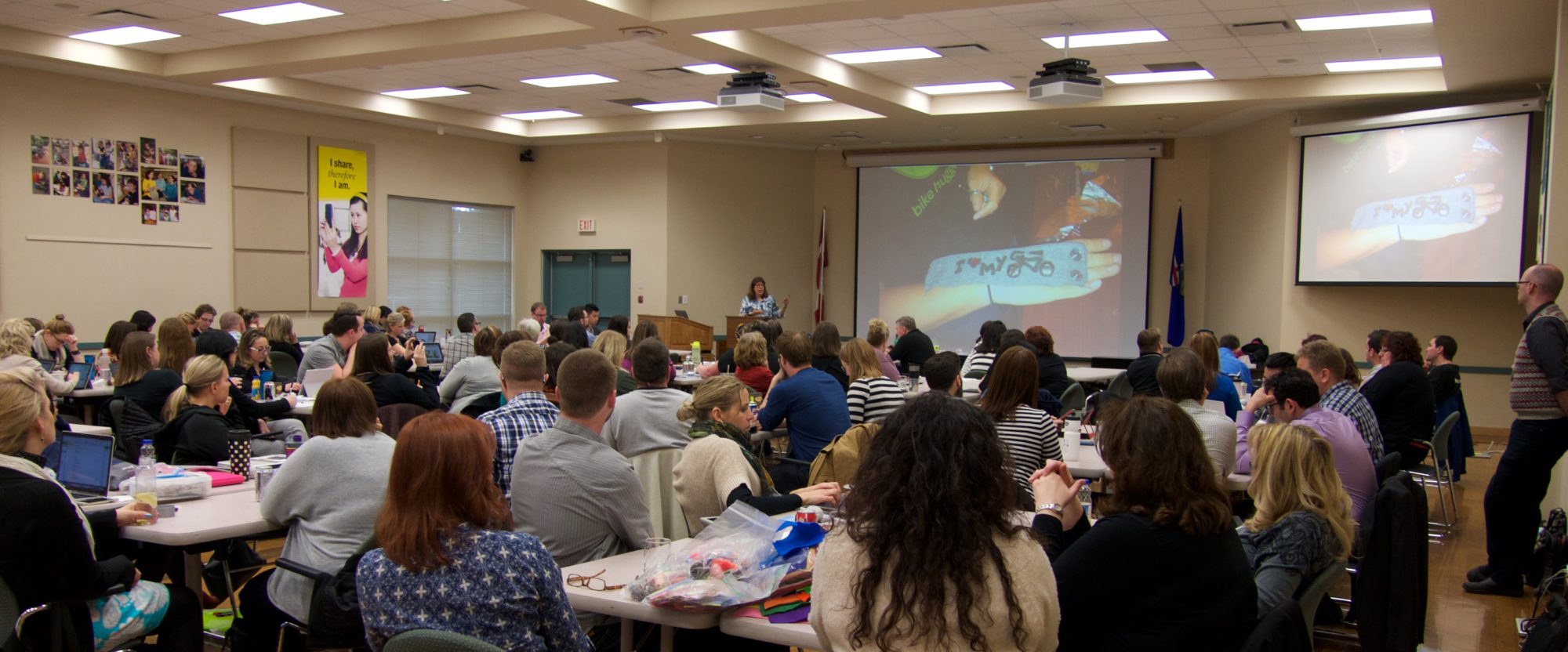Patrick Welsh has taught English at T.C. Williams High School in Alexandria, Virginia for more than 30 years. Last week, he wrote an editorial for the Washington Post called A School That’s Too High on Gizmos. Patrick relates his view of T.C. Williams as a school run by an administration consumed with…
“…technolust- a disorder affecting publicity-obsessed school administrators nationwide that manifests itself in an insatiable need to acquire the latest, fastest, most exotic computer gadgets, whether teachers and students need them or want them. Technolust is in its advanced stages at T.C., where our administrators have made such a fetish of technology that some of my colleagues are referring to us as “Gizmo High.”
As Patrick provides examples of technology gone wild, the story comes to life. Valiant teachers resisting miseducative practices, hints of collusion with hardware and software vendors, administrators seeking glory and headlines, teachers marginalized and ridiculed for not falling in line. Something is definitely wrong here. This sounds like a war between administration and teachers, with technology used as a weapon.
But read on. That’s not all that’s wrong with this picture…
Of course, the big question isn’t whether teachers like spending their time learning one new gizmo after another, but whether a parade of new technologies will help kids learn. From what I can see, that’s not the case. Says one math teacher: “Math grows out of the end of a pencil. You don’t want the quick answer; you want students to be able to develop the answer, to discover the why of it. The administration seems to think that computers will make math easy, but it has to be a painful, step-by-step process.”
Math grows out of the end of a pencil? It has to be painful? Did a math teacher actually say that? Have they noticed it’s not the 19th century anymore? Maybe there’s something else going on here.
I see the same thing in my classes, especially when it comes to writing essays. Many students send their papers in over the Internet, and while the margins are correct and the fonts attractive, the writing is worse than ever. It’s as if the rule is: Write one draft, run spell check, hit “send” and pray.
OK, now the point comes clear. For these teachers, the computers are not just a symptom, they are the problem. But the computer isn’t making students worse writers or setting these “rules”. Do the teachers have any responsibility for standards, for requiring excellent writing. Are the computers to blame for this too?
It seems that technology is a convenient scapegoat for problems faced by this school. Technology doesn’t solve problems, but it doesn’t cause them either. Yes, technology is supposed to make teaching more effective. The students should be using them for authentic activities, not for online worksheets. It should have been a collaborative effort with teachers to decide what to purchase and how to use it. The professional development should have been more than edu-jargon. Yes, yes, yes–many wrongs here.
But that’s not all that’s wrong. To wrap up his editorial, Patrick finds an example of how technology “should” be used.
North Point High School for Science, Technology and Industry in Waldorf went with ceiling-mounted LCD projectors but nixed the idea of laptops for all students. “Our philosophy is to have whatever technology our teachers want to do their jobs better available to them,” Principal Kim Hill told me. “Technology is just a tool, not an end in itself. It will never replace good teaching.”
Of course, LCD projectors are the more comfortable way, the way that ensures that teaching or learning doesn’t change, but gives the illusion of progress. Notice the false choice set up here. “Technology…will never replace good teaching.” Who is claiming that technology replaces good teaching? By the way, did you notice this is the North Point High School for Science, Technology and Industry!
It’s hard to know the truth of a situation based on one article from one point of view. It certainly sounds bad, and possibly is such a poisoned environment that it will take years to undo the damage. But from my point of view, blaming technology, even extreme “technolust” for the problems described here is only half the story. The other half of the story is how many ways school reform efforts can go wrong, and how fragile and rare it is when it goes right.
So much money, so much potential, so much waste, so much time lost, so much gone wrong.
Sylvia

 Educon 2.0
Educon 2.0 

 The students there were quite adamant that they valued the expertise of their teachers and in fact, wanted to be taught. But both students and teachers alike could give great examples of how listening to students created opportunities for greater connection to the lessons, and ideas for activities that the teacher might not have thought of by themselves. The input of students did not diminish the expertise of the teacher, but in fact enhanced the learning experience.
The students there were quite adamant that they valued the expertise of their teachers and in fact, wanted to be taught. But both students and teachers alike could give great examples of how listening to students created opportunities for greater connection to the lessons, and ideas for activities that the teacher might not have thought of by themselves. The input of students did not diminish the expertise of the teacher, but in fact enhanced the learning experience.